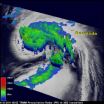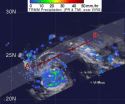(Press-News.org) MADISON, WI, SEPTEMBER 16, 2011 -- Durum wheat is a valuable cereal crop widely used for human consumption in the United States, Canada, and several European countries. Scab or Fusarium head blight is one of the crop's most serious diseases, reducing its grain yield and quality. Current durum cultivars don't have resistance to this widespread disease.
While working on the Durum Germplasm Enhancement Project (DGE), Dr. Prem Jauhar and staff at the USDA-ARS Northern Crop Research Laboratory, Fargo, ND discovered that a diploid wheatgrass contains the genes needed for scab resistance. The team produced a new wheat line called DGE-1 by incorporating a specific wheatgrass chromosome 1E into durum cultivars. Released in 2008, the DGE-1 line has 30 chromosomes, 28 coming from durum wheat and a pair from wheat grass. This is the first time a wheat line with enhanced scab tolerance was produced by Dr. Jauhar's DGE project.
For stable scab resistance, however, it's necessary to transfer the resistance genes from the added wheatgrass chromosome into related durum wheat chromosomes. This transfer is most likely to occur when the target chromosomes are in a single dose, but normally chromosomes are in pairs. Through several crosses involving the DGE-1 line, Dr. Jauhar was able to produce hybrid strains of durum wheat in which the grass chromosome 1E substituted its counterparts 1A and 1B of durum wheat. Jauhar's team used a technique to identify wheatgrass chromosomes incorporated into durum. By using molecular markers for these specific chromosomes, the scientists were able to identify these chromosomes rapidly and economically.
"These studies on chromosome engineering will help bring about genomic reconstruction that will have far-reaching implications in both basic and applied research on wheat," said Jauhar. This research is ongoing in the Cereal Crops Research Unit of the USDA-ARS Northern Crop Research Laboratory in Fargo.
###
The full article is available for no charge for 30 days following the date of this summary. View the abstract at https://www.crops.org/publications/tpg/articles/4/2/102.
The Crop Science Society of America (CSSA), founded in 1955, is an international scientific society comprised of 6,000+ members with its headquarters in Madison, WI. Members advance the discipline of crop science by acquiring and disseminating information about crop breeding and genetics; crop physiology; crop ecology, management, and quality; seed physiology, production, and technology; turfgrass science; forage and grazinglands; genomics, molecular genetics, and biotechnology; and biomedical and enhanced plants.
CSSA fosters the transfer of knowledge through an array of programs and services, including publications, meetings, career services, and science policy initiatives. For more information, visit www.crops.org
Scab resistance in durum wheat
Current durum wheat cultivars have no resistance to Fusarium head blight, but USDA researchers are searching for a solution to this widespread disease
2011-09-19
ELSE PRESS RELEASES FROM THIS DATE:
Balloon-based experiment to measure gamma rays 6,500 light years distant
2011-09-19
DURHAM, N.H. – Beginning Sunday, September 18, 2011 at NASA's launch facility in Fort Sumner, New Mexico, space scientists from the University of New Hampshire will attempt to send a balloon up to 130,000 feet with a one-ton instrument payload to measure gamma rays from the Crab Pulsar, the remains of a supernova explosion that lies 6,500 light years from Earth. The launch is highly dependent on weather and wind conditions, and the launch window closes at the end of next week.
The Gamma Ray Polarimeter Experiment (GRAPE), which was designed and built at the Space Science ...
Breeding soybeans for improved feed
2011-09-19
MADISON, WI, SEPTMEBER 12, 2011 -- Modifying soybean seed to increase phosphorus content can improve animal nutrition and reduce feed costs and nutrient pollution. However, further research is needed to commercialize this valuable technology. Knowledge of soybean and other crops such as maize suggest that reducing phytate, the principle storage form of phosphorus in plant tissue, in seeds reduces seed germination and emergence of seedlings in the field. In soybean, however, researchers debate whether this problem exists, and suggest that other factors may be the cause.
New ...
Lasers could be used to detect roadside bombs
2011-09-19
EAST LANSING, Mich. — A research team at Michigan State University has developed a laser that could detect roadside bombs – the deadliest enemy weapon encountered in Iraq and Afghanistan.
The laser, which has comparable output to a simple presentation pointer, potentially has the sensitivity and selectivity to canvas large areas and detect improvised explosive devices – weapons that account for around 60 percent of coalition soldiers' deaths. Marcos Dantus, chemistry professor and founder of BioPhotonic Solutions, led the team and has published the results in the current ...
NASA sees power within hurricane Maria as it heads for a landfall in Newfoundland
2011-09-19
VIDEO:
This animation of NOAA's GOES-13 satellite observations from Sept. 6 at 8:45 a.m. EDT through Sept. 16 at 7:45 a.m. EDT shows the movement of Hurricane Katia followed by Tropical...
Click here for more information.
Hurricane Maria joins twelve other hurricanes on record to make landfall in Newfoundland, Canada, and NASA satellite imagery revealed its inner strength.
The Tropical Rainfall Measuring Mission (TRMM) satellite passed over Hurricane Maria on Sept. ...
NASA's TRMM satellite sees moderate rainfall Tropical Storm Sonca
2011-09-19
When the Tropical Rainfall Measuring Mission (TRMM) satellite flew over Tropical Storm Sonca on Friday, Sept. 16 it found moderate rainfall mostly on the southern side of the storm. Chichi Jima can expect some of that rainfall over the weekend as Sonca passes east of the island.
TRMM passed over Tropical Storm Sonca and its precipitation radar instrument saw moderate rainfall occurring mostly on the southern side of the storm, while light-to-moderate rainfall was occurring throughout the storm. The southern edge of the storm had rainfall rates between .78 to 1.57 inches ...
Infrared satellite data shows Tropical Storm Roke strengthening
2011-09-19
Tropical Storm Roke has changed in size and is starting to change in strength. Roke appears to be consolidating in infrared imagery from NASA's Aqua satellite.
Roke began its life as a monsoon depression with a large low-level circulation center that over time consolidated and organized. The eastern half of Tropical Storm Roke was seen in an infrared image from NASA's Aqua satellite AIRS (Atmospheric Infrared Sounder) on Sept. 15, and it showed a more consolidated center with strong convection and very cold cloud-top temperatures.
Cloud-top temperatures are important ...
Study suggests possible link between two Type 2 diabetes drugs and pancreatic cancer
2011-09-19
Two newer drugs used to treat Type 2 diabetes could be linked to a significantly increased risk of developing pancreatitis and pancreatic cancer, and one could also be linked to an increased risk of thyroid cancer, according to a new UCLA study.
Researchers from the Larry L. Hillblom Islet Research Center at UCLA examined the U.S. Food and Drug Administration's database for adverse events reported between 2004 and 2009 among patients using the drugs sitagliptin and exenatide. They found a six-fold increase in the odds ratio for reported cases of pancreatitis with these ...
People born after World War II are more likely to binge drink and develop alcohol disorders
2011-09-19
September 15, 2011 --. In a review of 31 peer-reviewed and published studies, researchers at Columbia University's Mailman School of Public Health looked generational and gender differences in alcohol consumption, alcohol disorders, and mortality. Findings indicate that people born after World War II are more likely to binge drink and develop alcohol use disorders. Researchers also found that the gender gap in alcoholism and problem drinking is narrowing in many countries.
Findings will be published in the December 2011 issue of Alcoholism: Clinical & Experimental Research ...
Autism, intellectual disabilities related to parental age, education and ethnicity, not income
2011-09-19
SALT LAKE CITY – New research from the University of Utah in collaboration with the Utah Department of Health (UDOH) shows that the presence or absence of intellectual disability (ID) and autism spectrum disorders (ASD) varies with risk factors such as gender, parental age, maternal ethnicity, and maternal level of education. The study, published Sept. 15, 2011, in Autism Research, also shows that household income level has no association with either ID or ASD, in contrast to what other studies have suggested.
ASDs are a group of childhood neurodevelopmental disorders ...
Good news for rural stroke patients: Virtual stroke care appears cost-effective
2011-09-19
ST. PAUL, Minn. – In a first of its kind study, researchers have found that using two way audio-video telemedicine to deliver stroke care, also known as telestroke, appears to be cost-effective for rural hospitals that don't have an around-the-clock neurologist, or stroke expert, on staff. The research is published in the September 14, 2011, online issue of Neurology®, the medical journal of the American Academy of Neurology.
"In an era of spiraling health care costs, our findings give critical information to medical policy makers," said Jennifer J. Majersik, MD, MS, ...
LAST 30 PRESS RELEASES:
Making lighter work of calculating fluid and heat flow
Normalizing blood sugar can halve heart attack risk
Lowering blood sugar cuts heart attack risk in people with prediabetes
Study links genetic variants to risk of blinding eye disease in premature infants
Non-opioid ‘pain sponge’ therapy halts cartilage degeneration and relieves chronic pain
AI can pick up cultural values by mimicking how kids learn
China’s ecological redlines offer fast track to 30 x 30 global conservation goal
Invisible indoor threats: emerging household contaminants and their growing risks to human health
Adding antibody treatment to chemo boosts outcomes for children with rare cancer
Germline pathogenic variants among women without a history of breast cancer
Tanning beds triple melanoma risk, potentially causing broad DNA damage
Unique bond identified as key to viral infection speed
Indoor tanning makes youthful skin much older on a genetic level
Mouse model sheds new light on the causes and potential solutions to human GI problems linked to muscular dystrophy
The Journal of Nuclear Medicine ahead-of-print tip sheet: December 12, 2025
Smarter tools for peering into the microscopic world
Applications open for funding to conduct research in the Kinsey Institute archives
Global measure underestimates the severity of food insecurity
Child survivors of critical illness are missing out on timely follow up care
Risk-based vs annual breast cancer screening / the WISDOM randomized clinical trial
University of Toronto launches Electric Vehicle Innovation Ontario to accelerate advanced EV technologies and build Canada’s innovation advantage
Early relapse predicts poor outcomes in aggressive blood cancer
American College of Lifestyle Medicine applauds two CMS models aligned with lifestyle medicine practice and reimbursement
Clinical trial finds cannabis use not a barrier to quitting nicotine vaping
Supplemental nutrition assistance program policies and food insecurity
Switching immune cells to “night mode” could limit damage after a heart attack, study suggests
URI-based Global RIghts Project report spotlights continued troubling trends in worldwide inhumane treatment
Neutrophils are less aggressive at night, explaining why nighttime heart attacks cause less damage than daytime events
Menopausal hormone therapy may not pose breast cancer risk for women with BRCA mutations
Mobile health tool may improve quality of life for adolescent and young adult breast cancer survivors
[Press-News.org] Scab resistance in durum wheatCurrent durum wheat cultivars have no resistance to Fusarium head blight, but USDA researchers are searching for a solution to this widespread disease


